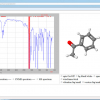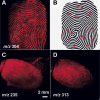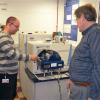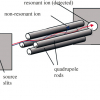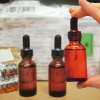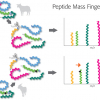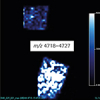Articles
There are many reasons for quantifying VOCs in air, from investigating pollution to diagnosis of diseases in humans. PTR-MS has many advantages for this, not least in speed and ability to provide an online analysis. It is a relatively young technique, but has a range of applications from botany and medicine through to industrial process monitoring, security screening, environmental analysis and food science.
“Mass spectrometry investigations of nanoparticles by tandem charge detection mass spectrometry” by Tristan Doussineau, Philippe Dugourd and Rodolphe Antoine describes how the limitation of conventional mass spectrometry for weighing macro-ions with masses higher than one megadalton can be overcome with the technique of charge detection mass spectrometry and how they have developed such an instrument for performing MS/MS. This has potential for exploring the “nano world”.
Tony (A.N.) Davies is after your advice in his latest column “Your committee needs you!”. The IUPAC Subcommittee on Electronic Data Standards is keen to learn about areas where you would like to see improvements in moving your data between your analytical instruments and data analysis and reporting packages.
Monitoring drinking water quality poses many challenges and the authors describe their approach that combines instrumental developments with new software.
Chemical contaminants in water are of concern to all of us. This article reviews the use of mass spectrometry (MS) in environmental and wastewater analysis.
After an introduction to MALDI, DESI and SIMS, the authors describe their main applications in forensics, as well as the advantages provided in terms of sample preparation over approaches routinely used in toxicological laboratories.
Tony (A.N.) Davies is impressed with the service form the UK's EPSRC National Mass Spectrometry Service Centre.
Applications of mass spectrometry in the clinical area have increased significantly in recent years and continue to expand. The complexity of analyses has also increased, with work being undertaken in clinical labs that would have been the reserve of research labs a few years ago.
M. Hässig,a K. Altwegg,a H. Balsiger,a B. Schläppi,a J.J. Berthelier,b B. Fiethe,c S.A. Fuselier,d J. De Keysere and M. Rubinf
aPhysikalisches Institut, University of Bern, Sidlerstr. 5, CH-3012 Bern, Switzerland
bLATMOS, Saint Maur, France
cInstitut of Computer and Network Engineering, Technische Universität Braunschweig, Germany
Selected ion flow tube mass spectrometry, SIFT-MS; new horizons in real time air and breath analysis
We conceive selected ion flow tube mass spectrometry, SIFT-MS, primarily as a real-time, absolute, analytical technique that can meet the challenge of the immediate analysis of humid exhaled breath for rapid clinical diagnosis and therapeutic monitoring. This objective has certainly been achieved and the application of SIFT-MS has quickly been expanded into many other areas where real time, immediate analyses of trace compounds in air are desired, as we have demonstrated in recent reviews and which we summarise at the end of this article.
Doping control authorities and sports drug testing laboratories are frequently confronted with the illicit use of performance-enhancing therapeutics and therefore various analytical strategies have been developed to detect a misused drug and/or its metabolic product(s) in blood or urine specimens. Besides the administration of clinically approved drugs prohibited in sports, new drug candidates currently undergoing early or advanced clinical trials have also been the subject of investigations concerning their prevalence and abuse by athletes.
This year the International Barcode of Life initiative (IBoL) plans to begin an ambitious programme to barcode the DNA of more than five million specimens representing at least 500,000 species in five years. Molecular barcodes exploit the fact that molecular sequences offer an independent method to identify a sample. Such molecular barcodes have widespread application in systematics, biodiversity, forensics and even food science. Molecular barcodes tend to be based upon DNA, which with the advent of new technologies offers a fast and efficient means of identification. Proteins too have been used in the past for molecular identification, most commonly exploiting the exquisite specificity of antibodies to discriminate targeted proteins. Recently the idea of using protein mass spectrometry to fingerprint samples has been used to target samples in which processing or decay has destroyed the DNA.
This article shows that MALDI high resolution mass spectrometry demonstrated directly that Hev b 6 and Hev b 1, and also truncated forms thereof, are present on the inner surface of medical NRL gloves. The speed and high accuracy of the applied method and instrumentation makes the detection of surface associated proteins feasible without any prior protein extraction procedure (in situ localisation).
In 2007 we introduced our method in Spectroscopy Europe describing the identification of furs by hair digest based matrix-assisted laser desorption/ionisation time of flight (MALDI-ToF) mass spectrometry (MS). This so-called SIAM (Species Identification of Animals) method can also be used for the species determination of ancient furs.
The Foundation for Analytical Science & Technology in Africa (FASTA) is a charitable company that was established in 2005 in response to a request to provide a GC-MS to the Jomo Kenyatta University of Agriculture & Technology (JKUAT) in Nairobi, Kenya. FASTA was founded by Steve Lancaster of BP and Barrie Nixon of Mass Spec UK Ltd. The objectives of the organisation are to support scientific education, analytical research and the preservation of the environment in Africa via capacity-building and technology transfer.
Maria C. Prieto Conaway,a Shousong Cao,b Farukh Durrani,b Youcef Rustum,b Ping Wang,c Khin Marlarc and Latif Kazimc
aThermo Fisher Scientific, San Jose, CA, USA
bRoswell Park Cancer Institute, Department of Cancer Biology, Buffalo, NY, USA
cRoswell Park Cancer Institute, Department of Cell Stress Biology, Buffalo, NY, USA
During the last few decades, solution and solid state techniques have been utilised to obtain information about the properties of supramolecular host–guest complexes. Mass spectrometric analysis of these fragile non-covalent complexes has been focused on the determination of the molecular mass of the interacting molecules and the analysis has concentrated on the characterisation of covalent compounds. Since the invention of the soft ionisation techniques [namely ESI (electospray ionisation) and MALDI (matrix-assisted laser desorption/ionisation)] and their development for mass spectrometry (MS) instruments, the area and way that MS analysis is used have greatly changed and expanded. In particular, ESI has attained a steady position for the analysis of biomolecules, their non-covalent complexes and other rather fragile systems, which were earlier impossible to study by mass spectrometric methods. Today, MS can be employed not only for molecular weight identification purposes but also for sophisticated analyses on versatile properties of compounds. In the area of supramolecular chemistry, MS studies are becoming more and more general, although MS utilisation is still quite limited.
The effectiveness of these new reagents in quantitating eight states simultaneously has been determined against a set of known peptides and proteins, and is outlined in this article. The reagents were evaluated for label efficiency, fragmentation efficiency and precision and accuracy of quantitation.
Concentrations of therapeutic drugs and their metabolites in waste and surface water are measured by highly selective and sensitive mass spectrometric techniques, such as gas chromatography-mass spectrometry (GC-MS) or high performance liquid chromatography-tandem mass spectrometry (HPLC-MS/MS). Using data obtained in this way, information about human metabolism of single active principles, and WWTPs characteristics (e.g., flow rate, population served), it is possible to calculate the environmental loads of therapeutic drugs and correlate them to their effective use (known from sales or production data). We will consider here the analytical aspects involved in the measurements of illicit drugs and their metabolites in wastewater samples by HPLC-MS/MS.
The authors show how the use of SIAM method (Species Identification of Animals MALDI-TOF mass spectrometry) is a fast and reliable tool for recognising the origin of mammalian species.



